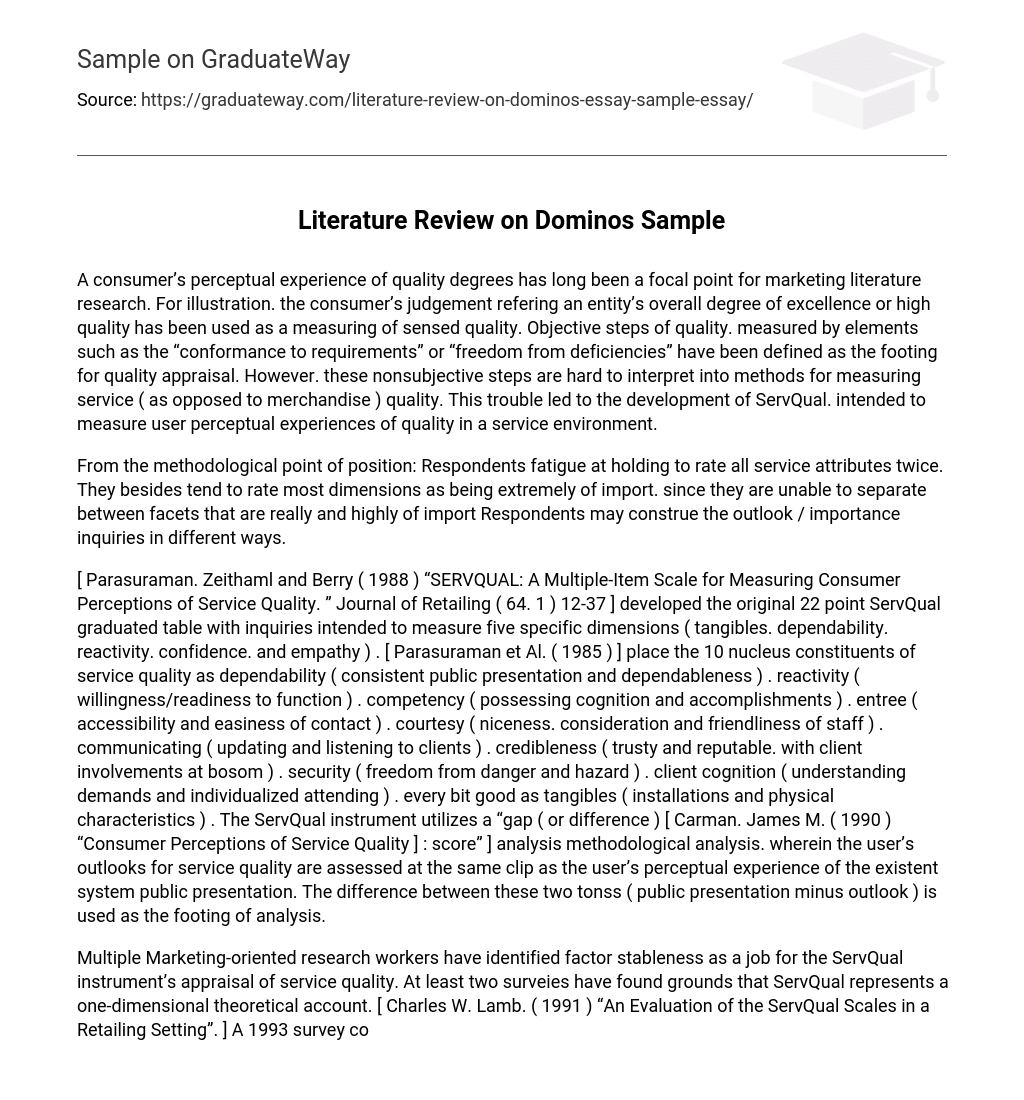A consumer’s perceptual experience of quality levels has long been a focal point for marketing literature research. For example, the consumer’s judgment regarding an entity’s overall level of excellence or high quality has been used as a measure of perceived quality. Objective measures of quality, measured by elements such as “conformance to requirements” or “freedom from deficiencies,” have been defined as the basis for quality appraisal.
However, these objective measures are difficult to translate into methods for measuring service (as opposed to merchandise) quality. This difficulty led to the development of ServQual, intended to measure user perceptions of quality in a service environment.
From a methodological point of view, respondents tire of having to rate all service attributes twice. They also tend to rate most dimensions as being extremely important, as they are unable to distinguish between aspects that are very and highly important. Respondents may interpret the expectation/importance questions in different ways.
Parasuraman, Zeithaml, and Berry (1988) developed the original 22-point ServQual scale with questions intended to measure five specific dimensions (tangibles, reliability, responsiveness, assurance, and empathy).
Parasuraman et al. (1985) identified the 10 core components of service quality as reliability (consistent performance and dependability), responsiveness (willingness/readiness to serve), competence (possessing knowledge and skills), access (accessibility and ease of contact), courtesy (niceness, consideration, and friendliness of staff), communication (updating and listening to clients), credibility (trustworthy and reputable, with customer interests at heart), security (freedom from danger and risk), customer knowledge (understanding needs and personalized attention), as well as tangibles (facilities and physical characteristics).
The ServQual instrument utilizes a “gap (or difference) score” analysis methodology, wherein the user’s expectations for service quality are assessed at the same time as the user’s perception of the actual system performance. The difference between these two scores (performance minus expectation) is used as the basis of analysis.
Multiple marketing-oriented researchers have identified factor stability as a problem for the ServQual instrument’s assessment of service quality. At least two studies have found evidence that ServQual represents a one-dimensional model [Charles W. Lamb (1991) “An Evaluation of the ServQual Scales in a Retailing Setting”].
A 1993 study concluded that the performance-only component of ServQual (referred to as ServPerf) “performs about as well as ServQual itself.” The writers found that “Overall, the nomological validity evidence slightly favors the non-difference score measure to the ServQual measure.”
CONCERNS ABOUT SERVQUAL’S UNDERLYING DIMENSIONS
One of the aims of this study involves the use of the SERVQUAL instrument to determine any real or perceived gaps between customer expectations and perceptions of the service offered. Another aim of this paper is to point out how management of service improvement can become more logical and integrated with regard to the prioritized service quality dimensions and their effect on increasing/decreasing service quality gaps.
In the following sections, after a brief review of the service quality concept, the model of service quality gaps and the SERVQUAL methodology is demonstrated and an example is presented to illustrate the application of the SERVQUAL approach. Then, after a discussion, major conclusions are derived.
The point (the number and dimensions of service quality vary depending on the context and culture involved) is of particular concern when assessing service quality in developing countries. For example, [Imrie et al. (2002)] highlight interpersonal relations as an important dimension for Chinese customers not adequately addressed by SERVQUAL. [Sureshchandar et al. (2003)] emphasize the significance of technological and human factors with bank customers in India.
Other studies, such as [Angur et al. (1999) and Wang et al. (2003)], have also found the SERVQUAL dimensions to be inadequate in that they do not fully describe the service criteria important to customers of emerging markets.





